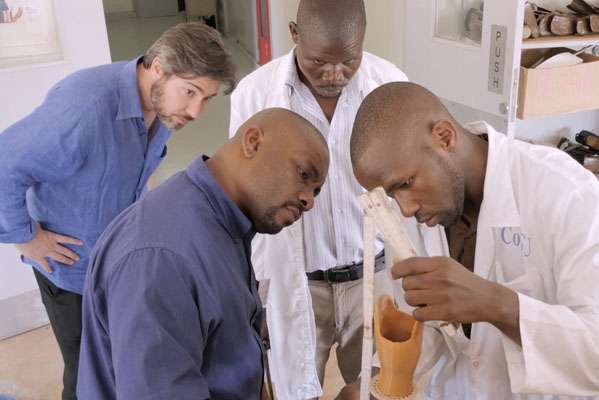Bringing 3D prosthetic printing to developing countries

According to the World Health Organization, approximately 30 million people in low-income countries require prosthetic limbs, braces or other assistive devices. To make things even tougher, the vast majority who require these devices don't have access to rehabilitation services.
Until now, that is.
Thanks to a Canadian non-profit social enterprise called Nia Technologies – supported by University of Toronto research – children with disabilities in developing countries may soon have better access to high-quality and better-fitting prosthetics.
Nia is currently testing its innovative 3D printing technology to help improve the lives of the disabled in developing countries. Nia's flagship technology, called 3D PrintAbility, was developed in collaboration with University of Toronto professor Matt Ratto, who also serves as Nia's Chief Science Officer.
"It has been incredibly validating to see how quickly clinical practitioners are able to adopt and even extend the cutting edge technologies we have provided to produce patient outcomes that potentially leapfrog our capacity in the developed world," says Ratto.
Perhaps the best testament to Nia's work was its very first patient, a spirited four-year-old Ugandan girl named Roseline who was born without a right foot. Roseline was outfitted with a 3D-printed prosthetic socket that was manufactured using Nia's 3D PrintAbility. "With her 3D PrintAbility socket in place, Roseline was able to walk and run alongside other children for the first time in her life," says Jerry Evans, CEO of Nia.
3D PrintAbility is a set of software tools that combines 3D scanning, modelling, and printing to produce customized prosthetics and orthotics for individuals with disabilities. Nia tested its devices in Uganda last year and will revisit the country in Spring 2016 and expand its trials into other developing countries in the coming year.
Nia's prosthetics are made from high strength nylon, using consumer grade 3D printers that are available off-the-shelf in North America. The developers are pleased with the early results.
"Preliminary research shows that by using 3D PrintAbility, technologists in developing countries can produce well-fitting devices in 1.5 days instead of the usual 5 days," says Evans.
As a social enterprise, Nia works towards establishing local expertise in developing countries. By training technologists to use 3D PrintAbility, Nia is transferring knowledge and skills that will help them help more people in their communities. During the initial clinical trial in 2015, the team in Uganda produced prosthetic sockets for about 40 children and youth with lower limb disabilities who ranged in age from 4 to 25.
Currently, 3D PrintAbility produces transtibial (below-the-knee) prosthetic sockets and ankle-foot orthoses (braces). But Nia hopes to add other orthopaedic devices in the future that will help more children like Roseline.
When Roseline tried walking with her new 3D PrintAbility prosthetic for the first time, she confirmed the value of Nia's mission to its CEO. "It is in those magical moments that all the messy and hard work of innovation comes together and makes sense," says Evans. "Seeing Roseline walk gave me a glimpse of how 3D PrintAbility could be of great value to other children and society at large."
Provided by University of Toronto


















